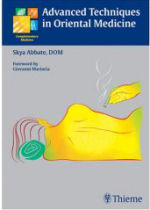Acupuncture & TCM Articles
The Beginnings Of Traditional Chinese Medicine:
Mixing Together Natural Remedies
The foundations of many holistic practices are the philosophies and ideals that come from Chinese medicine. Alternative and natural healing are based on concepts and philosophies of an ancient science and from the beginnings of this practice there has been a growth in natural methods to help promote healing and balance.
Herbal remedies that were most significant in helping with holistic healing were first recorded in 800 BC in a book known as the "Huang Di Nei Jeng" or "The Yellow Emperor's Classic of Internal Medicine." The origins of Chinese medicine as a practice come from this year even though the practice began before this.
The Yellow Emperor, one of the greatest rulers in Chinese history is thought to have lived in 4700 BC, and is often attributed as a mythical character with a status of royalty that provided inspiration to those living in the Orient. It is through this mythical character that this book of medicine is still portrayed under, with the attribution to the Yellow Emperor's knowledge that was passed down holistically.
At the beginning of this book is included 12 herbal prescriptions that were used with a combination of twenty-eight different ingredients. By the year 220 BC, the book had become so popular that medical services were established based around the remedies from the Yellow Emperor. The adjustments that were made from this book included detailed classifications of the herbs, how they worked, their strength and what their properties were for healing different ailments.
New publications and philosophies were added in order to provide practitioners with new methods and substances to the basis of the Yellow Emperor's remedy book and these additions provided new insights, all the way into the 1700s with the contribution of the Theory of Herbal Medicine.
Several practitioners in the East have found ways to provide insight into the growth of herbal practices and the balances between different herbs to gain energy and balance in one's life. The ancient practices of Chinese medicine through herbal remedies are a true philosophy that shows how time withstands the ideas of holistic treatments.
 Advanced Techniques in Oriental Medicine Advanced Techniques in Oriental Medicine

"When you grasp the needle, do so with great care, firm strength and caution for the peril, as if holding a tiger?s tail: one wrong move and great harm could befall."--Huangdi Neijing
This uncommonly useful guidebook presents an overview of all aspects of needling, from the parameters of the needle itself to the importance of treating and anchoring the patient?s spirit. Skya Abbate?s clear language and detailed descriptions guide you step-by-step through thirteen categories of disease, ranging from anxiety, geriatric and chronic degenerative diseases to those illnesses thought to be untreatable.
Specialized chapters offer insight and guidance for practitioners seeking to enhance their treatment strategies with additional therapeutic techniques, including moxibustion, bleeding techniques, herbal liniments, infrared light, threading, and others. Rounding out the text is a practical appendix with a glossary of Chinese medical terminology, sample instructions for patients, as well as an index with more than 2,000 disorders.
Skillfully weaving the time-honored principles of Oriental medicine into the cutting-edge reality of the clinic, Advanced Techniques in Oriental Medicine offers a wealth of simple, yet effective, treatment strategies.
|
